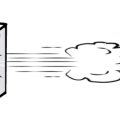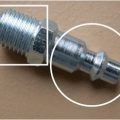Hey! This site is reader-supported and we earn commissions if you purchase products from retailers after clicking on a link from our site.
A ball filler is a must if you have a home compressor and you want to be a hero for the local kids. You should consider using an air compressor to inflate balls effectively and efficiently.
This page will provide you with all the relevant information on using an air compressor to inflate balls, an example, and suitable parts available on Amazon.
Table of Contents
- Why Use An Air Compressor to Inflate Balls
- Air Compressor Parts to Inflate Balls on Amazon
- Air Compressor Ball Inflator Example
- How to Use Air Compressor as Ball Inflator
Why Use An Air Compressor to Inflate Balls
Air compressors are great for inflating balls, tires, tubes and more! They’re certainly better than inflators or pumps as they can produce far much more power, allowing them to inflate items faster and a greater variety.
Air compressors can simply have a sports needle attached to their hoses, and then the needle is injected into the ball to inflate it. You just need to plug the air compressor in once the sports needle is attached and fill the ball until it is full!
Air Compressor Parts to Inflate Balls on Amazon
I have picked out some useful kit available on Amazon that will allow you to turn your air compressor into a ball inflator. The first is this ProTool 3 piece air inflator set that comes with an adapter suitable to fit into your air compressor air hose.
- Inflate footballs, basketballs & soccer balls with the same tool used by professional sports teams
Prices pulled from the Amazon Product Advertising API on:
Product prices and availability are accurate as of the date/time indicated and are subject to change. Any price and availability information displayed on [relevant Amazon Site(s), as applicable] at the time of purchase will apply to the purchase of this product.
The second is a Husky 13 piece inflating and deflating air compressor accessory kit which contains all the necessary attachments for you to create a perfect inflating system!
- INCLUDES: 1 x Blow Gun, 1 x OSHA Safety Blow Gun Tip, 2 x Sports Ball Inflation Needles, 1 x Tapered Inflation Needle, 1 x Rubber Blow Gun Tip, 1 x Female Tire Chuck, 2 x 1/4“ I/M Industrial Coupler (1 x Female, 1 x Male Threads), 4 x 1/4 I/M Industrial Plugs (2 x Female, 2 x Male Threads)
Prices pulled from the Amazon Product Advertising API on:
Product prices and availability are accurate as of the date/time indicated and are subject to change. Any price and availability information displayed on [relevant Amazon Site(s), as applicable] at the time of purchase will apply to the purchase of this product.
Air Compressor Ball Inflator Example
An example of using an air compressor to inflate balls has been provided by one of our readers, Jim Graham.
He states “I built this ball-filler some years ago, and ever since, neighbourhood kids (my son included) have been using it to keep their footballs, their soccer balls and beach balls fully inflated.”
Combining a portable “air pig” or “air hog” (a small air tank that you fill from a home or gas station compressor to take compressed air with you), and some simple compressed air plumbing as shown below, Jim has created a ball inflator to take with you to the ball game, beach or what have you, and it’s ready to bring any inflatable ball up to pressure fast!

Additional Information About This Ball Filler Example
- Item (1) is a small 2/2, in-line, lever operated air valve. Lifting the lever allows air to flow through the valve and moving the lever back shuts the valve off.
- Since compressed air flows very quickly, item (2) is an in-line needle valve which is used to control the air flow and reduce it to the minimum needed. This will help ensure that the ball isn’t accidentally over inflated (and blown to bits by too much air). Use the needle valve to reduce the flow to a trickle, and you can have complete control over the speed with which any ball is filled.
- Item (3) is a large-dial air gauge showing 0-10 PSI pressure range. This gage shows the pressure in the ball before the air valve is opened, and shows the increasing pressure as the ball is filled. Therefore, you want to get yourself a large, low range pressure gauge like this for the system you build. Of course, any compressed air gauge could be used. A small range, larger dial gauge makes reading the ball pressure easier.
- Item (4) is the fill-probe, and in this photo it is sitting on top of the fitting. The fill probe is a standard one available from any sports store.
- Item (5) in the photo is a mini-filter regulator which filters the air supply before it gets to the ball-filler apparatus. It includes a regulator, and this regulator setting should be “dialed down” far enough to help eliminate ball over-pressurization.
How to Use Air Compressor as Ball Inflator
Following this example, insert the fill-probe (item 4) through the rubber gasket into the ball. It is attached to a very flexible and soft polyurethane tube, making it convenient to reach the rubber fill-gasket on the ball.
As soon as the fill-probe is inserted through the rubber fill-gasket into the ball (and, as you may recall, the time honored way to seal the probe into the ball is with some saliva) the existing air pressure that is in the ball can be read on the large gauge (item 3).
Toggle the lever on the air valve (item 1) to start compressed air flow through the needle valve (item 2), along the polyurethane tube and into the ball through the rubber fill-gasket.
As the air pressure inside the ball increases, the air pressure can be monitored on the gauge.
When the ball is filled to a satisfactory pressure level, use the valve lever to turn off the valve, remove the fill-probe from the balls rubber fill-gasket.
Any air pressure left in the fill line will now bleed to atmosphere through the tip of the fill-probe, so it might hiss a bit. That is normal.
Important Considerations
If you are building this ball-inflator you could consider using a spring-return valve which would shut off the air flow simply by letting go of the lever. That might even be a safer way to go, as letting go of the valve would immediately shut off flow to the ball.
The fill-probe is attached to the air supply in the tank via a polyurethane tube. Polyurethane is very flexible, even in cooler temperatures. You can use polyethylene tube too, though it tends to kink if bent sharply and gets quite hard to bend when it’s cold. Tube is available from any big-box hardware store, along with most of the fittings you will need for your ball filler.
Once the correct pressure level is set, see if you can remove the regulator adjusting knob, to prevent further adjustment.
When built and set up properly, Jim Graham’s ball-filler apparatus can easily and safely inflate sports balls to keep them in the optimum inflated condition, making the kid’s games more fun to play.
In order to ensure safe operation I recommend that the use of the ball filler be overseen by an adult comfortable with compressed air and compressed air equipment.
Thanks to friend and mentor Mr. Jim Graham for this Ball Filler application for compressed air.
If you have any questions regarding inflating a ball with an air compressor then please leave a comment with a photo if applicable so that someone can help you!





